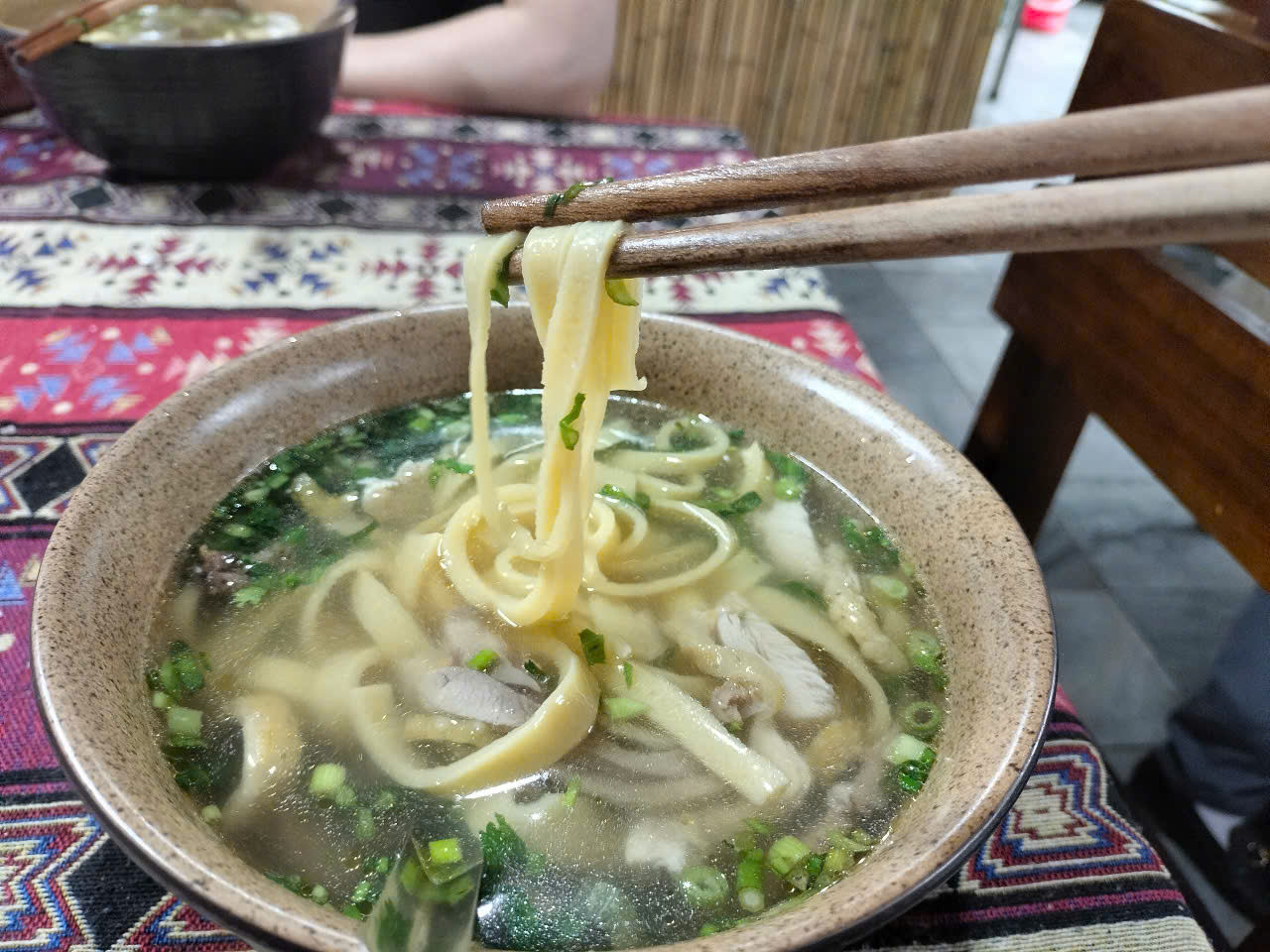
Ngo pho is a complete symphony of corn kernels. From the stage of selecting the breed - it must be native corn, small, short grains, containing fragrant, sticky starch - to the elaborate, meticulous processing process.
The person making corn pho is like a patient artisan. The corn kernels are separated from the cob, exposed to the highland sun and wind, then go through a process of grinding and cleaning. That eight-hour soaking process is like a deep sleep for the corn kernels to awaken, full of life, ready for the journey of transforming into pho noodles. Then the corn flour is filtered to remove the fibers, the discarded parts to retain the quintessence, the softest.
Making corn noodles requires special skill. The dough has poor adhesion, requiring the maker to watch the heat and adjust the amount of dough so that the noodles are both thin and chewy. When the noodles are cooked, the golden color appears, like a whisper of heaven and earth.
Slicing corn noodles is also an art. The hands of the maker must be gentle and decisive so that the rectangular pieces of noodles do not crumble, so that the noodles retain their soft, shiny appearance.
The soul of a bowl of corn noodles is, of course, the broth. The sweet, rich broth is simmered from beef for many hours, mixed with the characteristic aroma of highland vegetables, adding a bit of warmth from cinnamon and star anise. All blend together, embracing the golden noodles, creating a rustic yet profound flavor.
Eating a bowl of corn noodles is not just enjoying a dish. It is feeling the sun and wind of the highlands permeating each noodle. It is the respect for the products of the homeland, the meticulousness and dedication of the chef. Moreover, corn pho is also a hope, a way to increase the value of corn, to make the life of the people in the highlands more prosperous.

Comment
Print